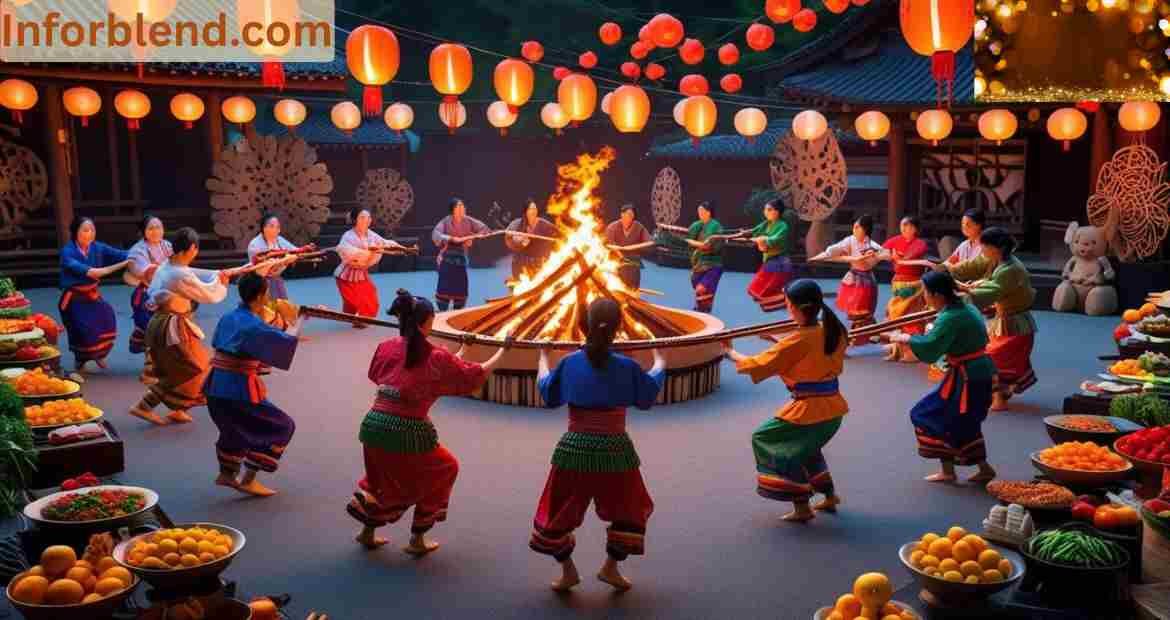Tsunaihaiya is more than just a tradition—it is a way of life. It’s the heartbeat of communities that value unity, heritage, and mindful living. The moment you experience Tsunaihaiya, whether in a bustling village square or a quiet family courtyard, you feel its warmth. From shared meals to seasonal festivals, every element carries the essence of togetherness and respect for the past.
In a world that moves too quickly, Tsunaihaiya reminds us to slow down. It encourages people to connect with nature, honor their elders, and celebrate the small joys that make life meaningful.
The Cultural Roots of Tsunaihaiya
Tsunaihaiya’s origins lie deep in ancestral customs. It began as a way for communities to come together, often marking seasonal changes or harvest celebrations. Music, dance, and crafts became its language—expressions that carried meaning without needing translation.
Each region adds its own color to Tsunaihaiya. Some celebrate with vibrant parades, others with intimate gatherings. Some focus on storytelling, others on art. But the heart remains the same: unity, respect, and joy.
I remember one Tsunaihaiya night in my grandmother’s village. There was no formal stage, just neighbors gathered under lantern light. Someone played a flute, children laughed, and elders told stories as bread baked in the clay oven. That evening taught me something important—Tsunaihaiya is not a performance. It’s a feeling of belonging.
Why Tsunaihaiya Still Matters Today
Modern life often pushes us apart. Busy schedules, digital distractions, and constant noise leave little room for genuine connection. Tsunaihaiya offers a pause—a reminder of what really matters.
This tradition bridges generations. Young people learn skills from their elders. Communities share food, music, and memories. And even strangers leave as friends after a Tsunaihaiya celebration.
It’s also a form of cultural preservation. Every dance step, every handcrafted item, every song keeps history alive. These are living archives, passed down not in books, but in hearts.
Bringing Tsunaihaiya into Everyday Life
You don’t have to live in a traditional village to embrace Tsunaihaiya. Its values can shape modern life in simple, meaningful ways. Here are a few ideas:
- Host a meal where everyone brings a recipe from their family history.
- Learn a traditional craft and teach it to others.
- Mark seasonal changes with small rituals—plant in spring, harvest in autumn.
- Share personal or family stories with younger generations.
- Organize small gatherings with music and dancing, even in a city apartment.
These acts might seem small, but they create lasting connections. Tsunaihaiya teaches us that community is built one shared moment at a time.
Tsunaihaiya and the Natural World
Many Tsunaihaiya traditions are tied to nature. Festivals often coincide with planting or harvest seasons. Decorations are made from natural materials. Even the food reflects seasonal availability.
This link with nature is more than symbolic. It teaches respect for the environment. Planting trees during celebrations, using eco-friendly crafts, and honoring the land all form part of the Tsunaihaiya spirit.
In today’s climate-conscious world, this is more relevant than ever. Tsunaihaiya offers a sustainable way of living that balances human needs with environmental care.
The Human Side of Tsunaihaiya
At its core, Tsunaihaiya is about people. It’s about looking someone in the eye as you share a story. It’s about the sound of laughter over a shared meal. It’s the warmth of holding hands in a dance circle, feeling part of something bigger than yourself.
I’ve seen young people who once felt disconnected from their roots come alive during Tsunaihaiya. They dance, sing, and listen to stories with genuine interest. For them, and for all of us, Tsunaihaiya is a bridge to a more connected future.
It is not about perfection. The beauty lies in sincerity—in the effort to show up, to share, to be present. That’s what makes Tsunaihaiya timeless.
Tsunaihaiya as a Modern Inspiration
Even outside its traditional setting, Tsunaihaiya can inspire workplaces, schools, and neighborhoods. Shared celebrations can build trust and cooperation. Storytelling can break down barriers between generations and cultures.
By adapting its principles to modern contexts, we can keep its essence alive. Whether it’s a multicultural festival in a city park or a neighborhood garden project, the spirit of Tsunaihaiya can thrive anywhere.
Conclusion
Tsunaihaiya is more than a celebration—it’s a philosophy of unity, respect, and joy. It teaches that life’s true richness comes from shared experiences and mindful living. In preserving and adapting its traditions, we strengthen our communities and pass on values that matter.
In a fast-paced, divided world, Tsunaihaiya is a reminder that we are stronger together. By embracing its spirit in both big celebrations and small daily rituals, we keep alive a tradition that has the power to heal, connect, and inspire for generations to come.

